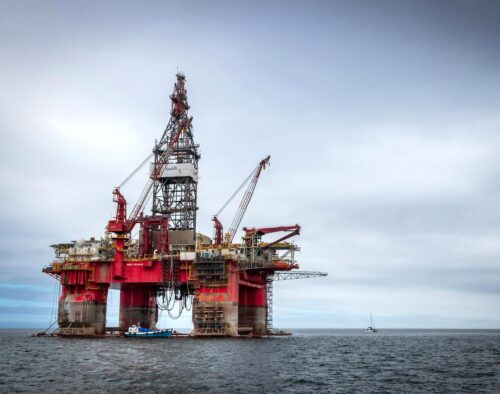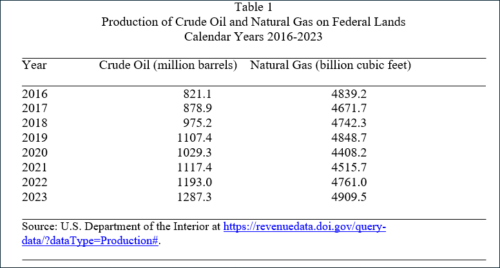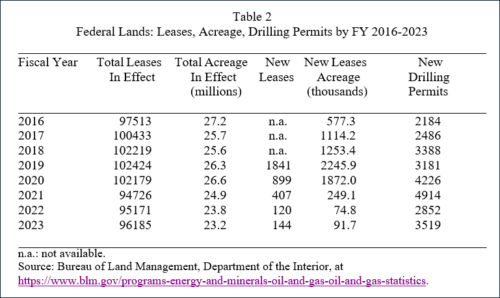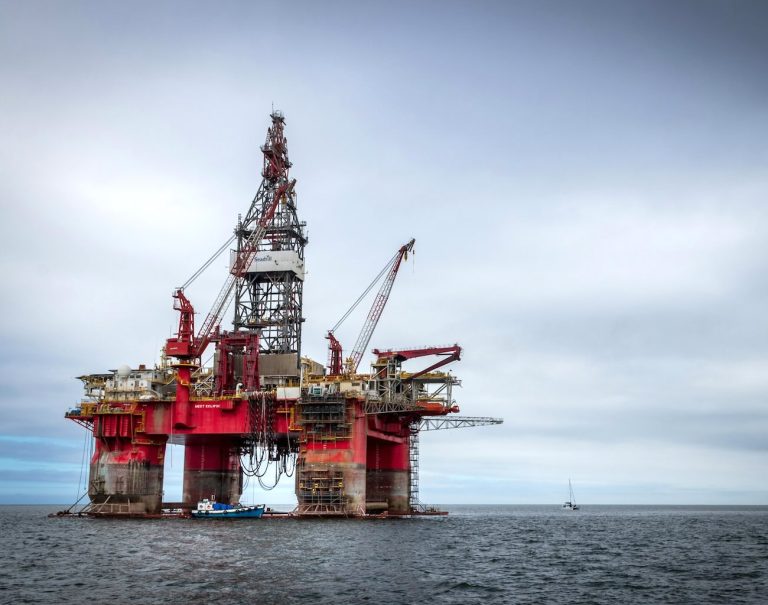
Is Joe Biden a “drill, baby, drill” president?
In a recent article, my AEI colleague Roger Pielke Jr. noted that based on time trends in U.S. oil production from federal lands (onshore and offshore) from 2008 to 2023, “Joe Bye Den is the 'Drill, baby, drill' president.”1
In summary, Pielke reconstructed data on oil production from federal lands reported by the U.S. Department of the Interior, showing that such oil production increased by approximately 129% between 2008 and 2023, and by more than 46% between 2017 and 2023,1 Compared to 2020, there will be a 25% reduction in 2023. [emphasis, links added]
Table 1 lists crude oil (and associated liquids) and natural gas production data from 2016 to 2023.


Fossil energy production on federal lands is the result of a lengthy process that includes complex preliminary analysis, leasing, exploration, permitting and development.
Leasing of specific federal lands is highly speculative, driven by some perceived potential for fossil production in the coming years, and may or may not result in an economically viable reality in a context where market conditions are uncertain at best. resource.
Once a lease is awarded, a complex, time-consuming and expensive geological analysis is carried out, the core purpose of which is to determine whether it is worthwhile to apply for a drilling license.
As a rough estimate, this geological survey process will take 2-4 years for onshore leases and 7-8 years for offshore leases Because of the ensuing increased difficulty in engineering and logistical analysis.
Administrative, regulatory and litigation challenges may prolong the process, The result may be a determination that a particular lease on a particular geological formation provides resources of sufficient size and cost characteristics to be economically viable.
In addition, horizontal drilling requires leases and permits for contiguous land parcels, Another complex issue that is often forgotten in the public discussion of federal leasing policy on federal lands.
therefore, Simply observing the dramatic increase in production from federal lands during the Biden administration after 2020 does not lend itself to the support for Pielke's claim that one might conclude at first glance.
Table 2 presents data on total leases and acreage, new leases and acreage, and number of drilling permits approved for fiscal years on federal lands for fiscal years 2016-2023, all ending on October 1, 2023.


As mentioned above, The number of new drilling licenses issued in a given year is largely influenced by the leases approved in previous years.and then perform geological and other analyzes to determine whether it is worthwhile to apply for a drilling permit.
therefore, Leasing activity in previous years was the main driver of fossil energy production on federal lands this year.
Similarly, Leasing activity currently and/or in recent years will be a central determinant of this type of fossil energy production in the coming years.
The increase in fossil energy production on federal lands observed during the Biden administration is largely the result of strong leasing and leasing acreage activity in 2019-2020.
Both will decline significantly during 2021-2023.
The central takeaway is that Mr. Biden is not a “drill, baby, drill” president and that fossil energy production on federal lands is likely to decline over the next two to four years.
Popular photo on Unsplash by Grant Durr
The Honest Broker is written by climate expert Roger Pielke Jr and is reader-supported. If you value what you read here, please consider subscribing and supporting the work.
Read more at Honest Brokers
